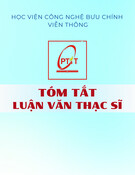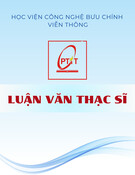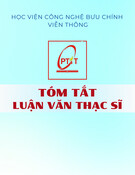
Annals of Mathematics
A cornucopia of isospectral pairs
of metrics on spheres with
different local geometries
By Z. I. Szab´o*

Annals of Mathematics,161 (2005), 343–395
A cornucopia of isospectral pairs of metrics
on spheres with different local geometries
By Z. I. Szab´
o*
Abstract
This article concludes the comprehensive study started in [Sz5], where
the first nontrivial isospectral pairs of metrics are constructed on balls and
spheres. These investigations incorporate four different cases since these balls
and spheres are considered both on 2-step nilpotent Lie groups and on their
solvable extensions. In [Sz5] the considerations are completely concluded in
the ball-case and in the nilpotent-case. The other cases were mostly outlined.
In this paper the isospectrality theorems are completely established on spheres.
Also the important details required about the solvable extensions are concluded
in this paper.
A new so called anticommutator technique is developed for these construc-
tions. This tool is completely different from the other methods applied on the
field so far. It brought a wide range of new isospectrality examples. Those
constructed on geodesic spheres of certain harmonic manifolds are particularly
striking. One of these spheres is homogeneous (since it is the geodesic sphere of
a 2-point homogeneous space) while the other spheres, although isospectral to
the previous one, are not even locally homogeneous. This shows that how little
information is encoded about the geometry (for instance, about the isometries)
in the spectrum of Laplacian acting on functions.
Research in spectral geometry started out in the early 60’s. This field
might as well be called audible versus nonaudible geometry. This designation
much more readily suggests the fundamental question of the field: To what
extent is the geometry of compact Riemann manifolds encoded in the spectrum
of the Laplacian acting on functions?
It started booming in the 80’s, however, all the isospectral metrics con-
structed until the early 90’s had the same local geometry and they differed
from each other only by their global invariants, such as fundamental groups.
*Research partially supported by NSF grant DMS-0104361 and CUNY grant 9-91907.

344 Z. I. SZAB ´
O
Then, in 1993, the first examples of isospectral pairs of metrics with dif-
ferent local geometries were constructed both on closed manifolds [G1] and
on manifolds with boundaries [Sz3], [Sz4]. Gordon established her examples
on closed nil-manifolds (which were diffeomorphic to tori) while this author
performed his constructions on topologically trivial principal torus bundles
over balls, i.e., on Bm×T3. The boundaries of the latter manifolds are the
torus bundles Sm−1×T3. The isospectrality proofs are completely different
in these two cases. On manifolds with boundaries the proof was based on an
explicit computation of the spectrum.The main tool in these computations was
the Fourier-Weierstrass decomposition of the L2-function space on the torus
fibres T3
p.
The results of this author were first announced during the San Antonio
AMS Meeting, which was held January 13–16, 1993 (cf. Notices of AMS, Dec.
1992, vol 39(10), p. 1245) and, thereafter, in several seminar talks given at the
University of Pennsylvania, Rutgers University and at the Spectral Geometry
Festival held at MSRI(Berkeley), in November, 1993. It was circulated in
preprint form but it was published much later [Sz4]. The later publication
includes new materials, such as establishment of the isospectrality theorem on
the boundaries Sm−1×T3of the considered manifolds as well.
The author’s construction strongly related to the Lichnerowicz conjecture
(1946) concerning harmonic manifolds. This connection is strongly present
also in this paper since the striking examples offered below also relate to the
conjecture.
ARiemann manifold is said to be harmonic if its harmonic functions yield
the classical mean value theorem. One can easily establish this harmonicity on
two-point homogeneous manifolds. The conjecture claims this statement also
in the opposite direction: The harmonic manifolds are exactly the two-point
homogeneous spaces.
The conjecture was established on compact, simply connected manifolds
by this author [Sz1], in 1990. Then, in 1991, Damek and Ricci [DR] found
infinitely many counterexamples for the conjecture in the noncompact case by
proving that the natural left-invariant metrics on the solvable extensions of
Heisenberg-type groups are harmonic. The Heisenberg-type groups are partic-
ular 2-step nilpotent groups attached to Clifford modules (i.e., to representa-
tions of Clifford algebras) [K]. Among them are the groups H(a,b)
3defined by
imaginary quaternionic numbers (cf. (2.13) and below).
In constructing the isospectrality examples described in [Sz3], [Sz4], the
center R3of these groups was factorized by a full lattice Γ to obtain the torus
T3=Γ\R3and the torus bundle R4(a+b)×T3=Γ\H(a,b)
3. Then this torus
bundle was restricted onto a ball B⊂R4(a+b)and both the Dirichlet and
Neumann spectrum of the bundle B×T3(topological product) was computed.
It turned out that both spectra depended only on the value (a+b), proving the

CORNUCOPIA OF ISOSPECTRAL PAIRS 345
desired isospectrality theorem for the ball×torus-type domains of the metric
groups H(a,b)
3having the same (a+b).
Gordon and Wilson [GW3] generalized the isospectrality result of [Sz3],
[Sz4] to the ball×torus-type domains of general 2-step nilpotent Lie groups.
Such a Lie group is uniquely determined by picking a linear space, E,ofskew
endomorphisms acting on a Euclidean space Rm(cf. formula (0.1)). Two en-
domorphism spaces are said to be spectrally equivalent if there exists an orthog-
onal transformation between them which corresponds isospectral (conjugate)
endomorphisms to each other. (This basic concept of the field was introduced
in [GW3]. Note that the endomorphism spaces belonging to the Heisenberg
type groups H(a,b)
3satisfying (a+b)=constant are spectrally equivalent.)
By the first main theorem of [GW3], the corresponding ball×torus do-
mains are both Dirichlet and Neumann isospectral on 2-step nilpotent Lie
groups which are defined by spectrally equivalent endomorphism spaces. Then
this general theorem is used for constructing continuous families of isospectral
metrics on Bm×T2such that the distinct family members have different local
geometries.
It turned out too that these metrics induce nontrivial isospectral met-
rics also on the boundaries, Sm−1×T, of these manifolds. This statement
was independently established both with respect to the [GW3]-examples (in
[GGSWW]) and the [Sz3]-examples (in [Sz4]). Each of these examples has its
own interesting new features. Article [GGSWW] provides the first continuous
families of isospectral metrics on closed manifolds such that the distinct family
members have different local geometries. In [Sz3] one has only a discrete family
g(a,b)
3of isospectral metrics on S4(a+b)×T3(such a family is defined by the
constant a+b). The surprising new feature is that the metric g(a+b,0)
3is homo-
geneous while the metrics g(a,b)
3satisfying ab = 0 are locally inhomogeneous.
At this point of the development no nontrivial isospectral metrics con-
structed on simply connected manifolds were known in the literature. The
first such examples were constructed by Schueth [Sch1]. The main idea of her
construction is the following: She enlarged the torus T2of the torus bundle
Sm−1×T2considered in [GGSWW] into a compact simply connected Lie group
Ssuch that T2is a maximal torus in S. Then the isospectral metrics were
constructed on the enlarged manifold Sm−1×S. Also this enlarged manifold
is a T2-bundle with respect to the left action of T2on the second factor. The
original bundle Sm−1×T2is a sub-bundle in this enlarged bundle. Then the
parametric families of isospectral metrics introduced in [GGSWW] on mani-
folds Sm−1×T2are extended such that they provide isospectral metrics also
on the enlarged manifold. In special cases she obtained examples on the prod-
uct of spheres. The metrics with the lowest dimension were constructed on
S4×S3×S3.

346 Z. I. SZAB ´
O
In [Sch2] this technique is reformulated in a more general form such that
certain principal torus bundles are considered with a fixed metric on the base
space and with the natural flat metric on the torus T. (Important basic con-
cepts of this general theory are abstracted from works [G2], [GW3].) The
isospectral metrics are constructed on the total space such that they have the
following three properties: (1) The elements of the structure group Tact as
isometries. (2) The torus fibers have the prescribed natural flat metric. (3)
The projection onto the base space is a Riemannian submersion.
One can define such a Riemannian metric just by choosing a connection on
this principal torus bundle for defining the orthogonal complement to the torus
fibers. Then the isospectral metrics with different local geometries are found
by appropriate changing (deforming) of these connections. This combination
of extension- and connection-techniques is a key feature of Schueth’s construc-
tions, which provided new surprising examples including isospectral pairs of
metrics with different local geometries with the lowest known dimension on
S2×T2.
Let us mention that in each of the papers [G1], [G2], [GW3], [GGSWW],
[Sch1] the general torus bundles involved in the constructions have total
geodesic torus fibres. This assumption is not used in establishing the iso-
spectrality theorem on the special torus bundle considered [Sz3], [Sz4]. This
assumption is removed and the torus bundle technique is formulated in a very
general form in [GSz]. Though this form of the general isospectrality theorem
opens up new directions, yet examples constructed on balls or on spheres were
still out of touch by this technique, since no ball or sphere can be considered
as the total space of a torus bundle, where dim(T)≥2.
The first examples of isospectral metrics on balls and spheres have been
constructed most recently by this author [Sz4] and, very soon thereafter, by
Gordon [G3] independently. The techniques applied in these two constructions
are completely different, providing completely different examples of isospectral
metrics. Actually none of these examples can be constructed by the technique
used for constructing the other type of examples.
First we describe Gordon’s examples. The crucial new idea in her con-
struction is a generalization of the torus bundle technique such that, instead
of a principal torus bundle, just a torus action is considered which is not re-
quired to be free anymore. Yet this generalization is benefited by the results
and methods of the bundle technique (for instance, by the Fourier-Weierstrass
decomposition of function spaces on the torus fibres for establishing the isospec-
trality theorem) since they are still applicable on the everywhere-dense open
subset covered by the maximal dimensional principal torus-orbits. This idea
really gives the chance for constructing appropriate isospectral metrics on balls
and sphere, since these manifolds admit such nonfree torus actions.


























